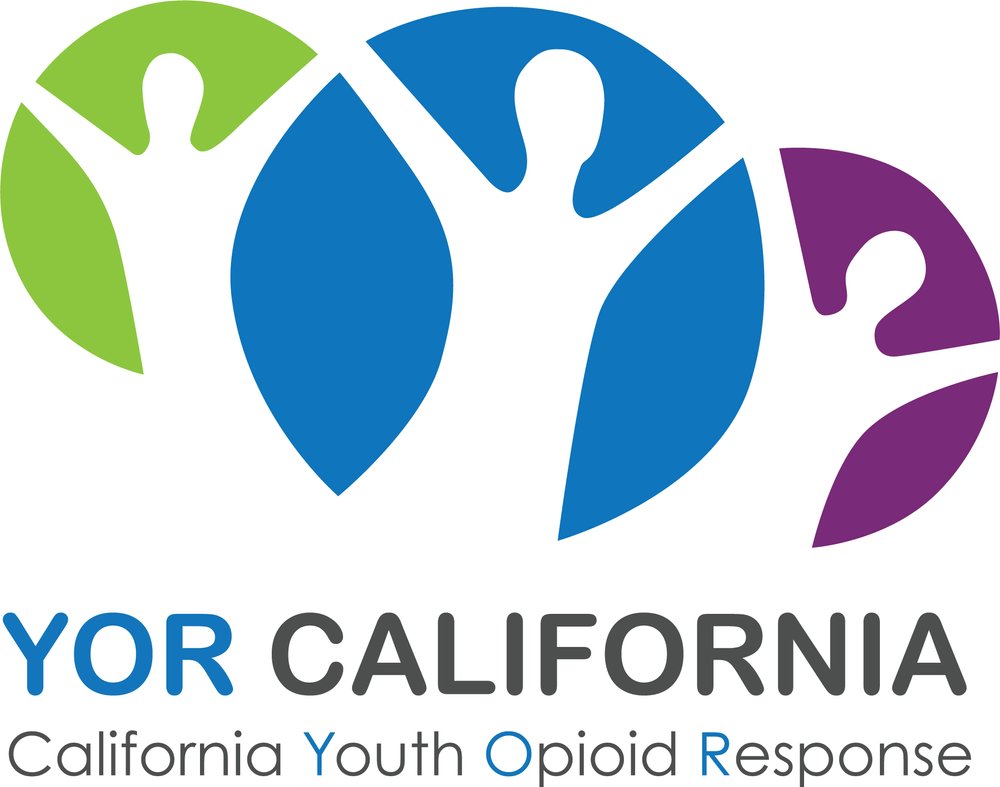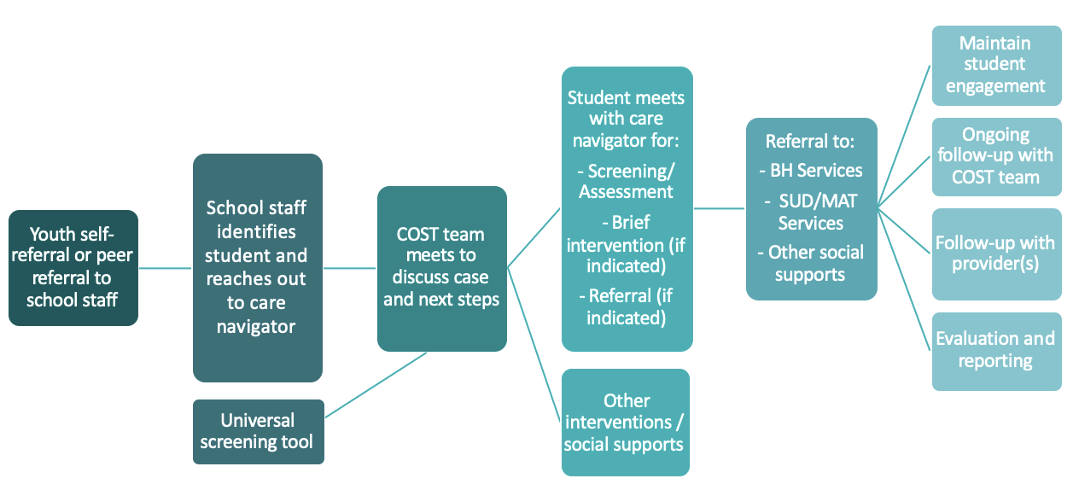Designing a Care Navigation Program in Marin County High Schools

Background
The Marin County Youth Opioid Response (YOR) 2 grant began in March 2021 through the Marin County Probation Department and is managed by BluePath Health. Marin YOR 2 runs through August 2022 and aims to create a more equitable and holistic culture of health for Marin County Youth, by expanding referrals and navigation of services for youth experiencing opioid use disorder (OUD) and stimulant use disorder (StUD). This project is funded by the Department of Health Care Services’ Youth Opioid Response (YOR California) project.
The Marin YOR 2 project establishes care navigators in Novato and San Rafael High Schools through partnerships with local community-based organizations in Marin County: North Marin Community Services and Huckleberry Youth Programs. The care navigators provide screenings, brief interventions, and referrals to treatment services, as needed, for students with OUD, StUD, and co-occurring conditions. They also help facilitate the schools’ coordination of services team (COST). Part-time clinicians are also on-site to provide clinical services to those referred by the care navigators. Outcomes of this effort will be measured through aggregated screenings and other key success indicators. In addition, we anticipate that the experiences and key learnings will enhance future care coordination services in schools and will contribute to creating financial sustainability for high school health and wellness.
An intentional and important component of the project design is youth input. RxSafe Marin Youth Action Team serves as an advisory group and is involved in all aspects of this project, including youth outreach and education.
Marin YOR 2 builds upon the findings from the original Youth Opioid Response (YOR) Marin Project[LJ1] Over the course of 2019 to 2020, BluePath Health conducted an environmental scan, interviewed subject matter experts, facilitated focus groups and hosted community meetings to understand where gaps exist in meeting adolescent and family needs to combat opioid use disorder and other co-occurring conditions. High priority areas identified included the role that schools should play in identification of needs, navigation to services and supporting necessary follow up. support.
The Marin YOR 2 Care Navigation Model
The Marin YOR 2 Care Navigation Model is being used to provide a pathway for students who need support related to substance use or co-occurring conditions. There are various methods through which the student may be referred to the care navigator for screenings and assessment: a universal social-emotional learning (SEL) screening tool like Co-vitality, peer referral, self-referral, or a concerned family member, among others.
Once the student meets with the care navigator, they are assessed for substance use, suicide risk, anxiety, depression, and protective factors.¹ They are then offered a brief intervention, if needed, using motivational interviewing techniques², and referred for further assessment and services if indicated. The care navigator then oversees referrals, following up with the student, parents, and providers. The COST team remains updated and engaged until the case is closed.

Coordination of Services Team (COST)
The Coordination of Services Team (COST)³ is made up of a multidisciplinary team of school staff and providers who manage and integrate various supports and resources for students. COST aims to improve a school’s organizational ability to serve students and to provide more equitable access to services and resources, using a centralized system to refer students to both school-based and community-based services. The COST model provides a structure for school staff, administrators, and providers to discuss the strengths and needs of students. The care navigator helps facilitate these weekly meetings and determine appropriate interventions and resources for each student referred to COST.
Contact BluePath Health
For more information or to participate in the RxSafe Youth Action Team, please contact Lauren Jacobson at lauren.jacobson@bluepathhealth.com.
¹ https://www.childwelfare.gov/topics/preventing/promoting/protectfactors/
² https://motivationalinterviewing.org/understanding-motivational-interviewing